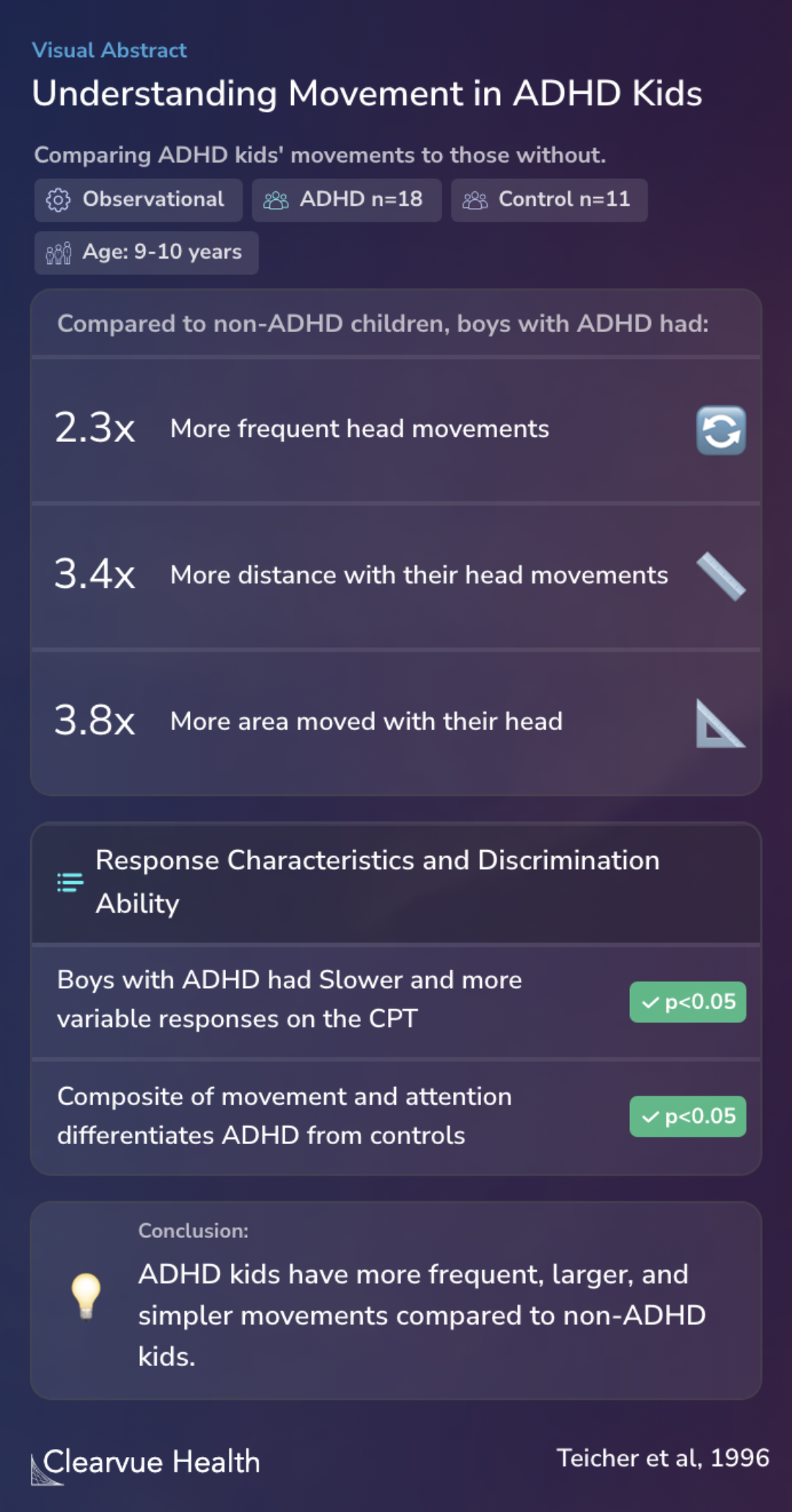Objective measurement of hyperactivity and attentional problems in ADHD
Understanding Movement in ADHD Kids
Teicher MH, Ito Y, Glod CA, Barber NI

Objectives
The aim of this study was to closely observe how children who have ADHD behave when they are sitting and doing a task that requires continuous attention, like the CPT (Continuous Performance Task). This task tests how well they can keep their focus over time.
To precisely describe movement abnormalities in seated children with attention-deficit hyperactivity disorder (ADHD) while they were engaged in a continuous performance task (CPT).
Methods
In this investigation, the team diagnosed ADHD in children using detailed interviews and specific criteria. They looked at how 18 boys with ADHD, aged around 9 to 9.5 years, and 11 boys without ADHD, aged about 8.5 years, moved while they were seated. They used a unique system that could track movements well, tracking four markers on the boys at a very high rate and with great detail to understand how their movements differed.
Diagnoses were made by using structured interviews (Schedule for Affective Disorders and Schizophrenia for School-Age Children-Epidemiologic Version) and DSM-IV criteria. Movement patterns of 18 boys with ADHD (9.3 +/- 2.4 years) and 11 normal controls (8.6 +/- 1.8 years) were recorded u...
Results
The findings from this study showed that boys with ADHD moved their heads far more often, about 2.3 times, than boys without ADHD. They also moved their heads further, about 3.4 times as much, and their movements covered a larger area, almost 4 times greater. Their movements were simpler and more straight-line compared to those without ADHD. When doing the CPT, their responses were slower and not as consistent. How they moved their heads and how varied their response times were linked to what their teachers thought about their behavior. A unique mix of movement and attention measures was able to tell apart 16 of the 18 boys with ADHD from all 11 boys without ADHD.
Boys with ADHD moved their head 2.3 times more often than normal children (p < .002), moved 3.4 times as far (p < .01), covered a 3.8-fold greater area (p < .001), and had a more linear and less complex movement pattern (p < .00004). They responded more slowly and with greater variabilit...
Conclusions
It turns out that the common idea that boys with ADHD can't stay still is actually true, and can be proven. What often looks like just "fidgeting" is actually them making bigger movements with their whole body more often. This study adds to what we know by showing exactly how these movements are different.
The relative inability of boys with ADHD to sit still can be objectively verified, and "fidgeting" appears to consist of more frequent, larger amplitude, whole body movements.
Key Takeaways
Context
Other research has also looked at ADHD and movement. For example, one study found that how well kids with ADHD can focus has a lot to do with how they move. It's not just about not being able to stop themselves from moving, but more about how they pay attention.
And as kids get older, they generally get better at controlling their movements. This improvement in how they can start or stop actions as they grow up is linked to ADHD and how well they can control their behavior in other ways too. This could help us understand and identify ADHD in kids more clearly.